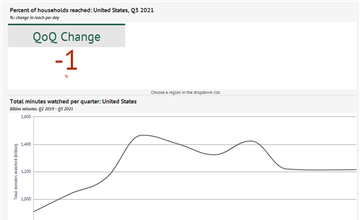In 2013, there were 102,400 grown-up females in neighborhood correctional facilities in the United States, and 111,300 grown-up females in state and government penitentiaries clearwave innovations . Inside the US, the pace of female detainment expanded fivefold in a two-decade range finishing in 2001; the increment happened in view of expanded arraignments and convictions of offenses connected with sporting medications, expansions in the severities of offenses, and an absence of local area approvals and treatment for ladies who disregard regulations. In the United States, specialists started lodging ladies in remedial offices separate from men during the 1870s. As per the ACLU, “The greater part of the ladies in detainment facilities and prisons (56%) are imprisoned for medication or property offenses, and Black ladies are twice as prone to be imprisoned as white ladies.” Black ladies will generally get longer sentences and crueler discipline than white people for carrying out similar wrongdoings.

As per Angela Davis, much of the time, white ladies are placed in mental organizations, though people of color are shipped to jail for similar wrongdoing. In 2013, there were 628,900 grown-up guys in nearby correctional facilities in the United States and 1,463,500 grown-up guys in state and government jails. In an investigation of condemning in the United States in 1984, David B. Mustard found that guys got 12% longer jail terms than females in the wake of “controlling for the offense level, criminal history, region, and offense type,” and noticed that females get impressively more restricted sentences relative with men than whites similar with blacks. A later report by Sonja B. Starr saw sentences for men as up to 60% higher while controlling for extra factors. A few clarifications for this uniqueness have been offered, including that ladies have more to lose from imprisonment, and that men are the objectives of segregation in condemning.
Youth
- Through the adolescent courts and the grown-up law enforcement framework, the United States detains a greater amount of its childhood than some other countries on the planet, an impression of the bigger patterns in imprisonment rehearses in the United States. This has been a wellspring of contention for various reasons, incorporating congestion and savagery in youth detainment offices, the indictment of young people as grown-ups, and the drawn-out results of imprisonment on the singular’s opportunities for progress in adulthood.
- In 2014, the United Nations Human Rights Committee scrutinized the United States for around ten legal maltreatment, including the abuse of adolescent detainees. A UN report distributed in 2015 scrutinized the US for being the main country on the planet to condemn adolescents to life detainment without any chance to appeal.
- As per government information from 2011, around 40% of the country’s adolescent detainees are housed in confidential offices. The detainment of young people has been connected with the impacts of family and neighborhood impacts. One examination found that the approaches to acting of family members and neighborhood peers seem to impact the approach to acting and consequences of troubled youngsters essentially.
Psychological instability
- In the United States, the level of detainees with dysfunctional behavior has been consistently expanding, with rates more than quadrupling from 1998 to 2006. Many have ascribed this pattern to the deinstitutionalization of deranged people starting during the 1960s when mental clinics the nation over started shutting their entryways. In any case, that’s what different specialists show “there is no proof for the fundamental criminalization premise that diminished mental administrations make sense of the unbalanced gamble of imprisonment for people with psychological maladjustment”.
- As per the Bureau of Justice Statistics, over a portion of all detainees in 2005 had encountered dysfunctional behavior as recognized by “a new history or side effects of an emotional wellness issue”; of this populace, prison prisoners encountered the most noteworthy paces of side effects of psychological sickness at 60%, trailed by 49% of state detainees and 40 percent of government detainees.
- Not the least individuals with ongoing narratives of dysfunctional behavior end up imprisoned, however numerous who have no set of experiences of psychological sickness wind up creating side effects while in jail. In 2006, the Bureau of Justice Statistics found that a fourth of state detainees had a background marked by dysfunctional behavior, while 3 of every 10 state detainees had created side effects of psychological maladjustment since becoming imprisoned with no new history of psychological maladjustment.

